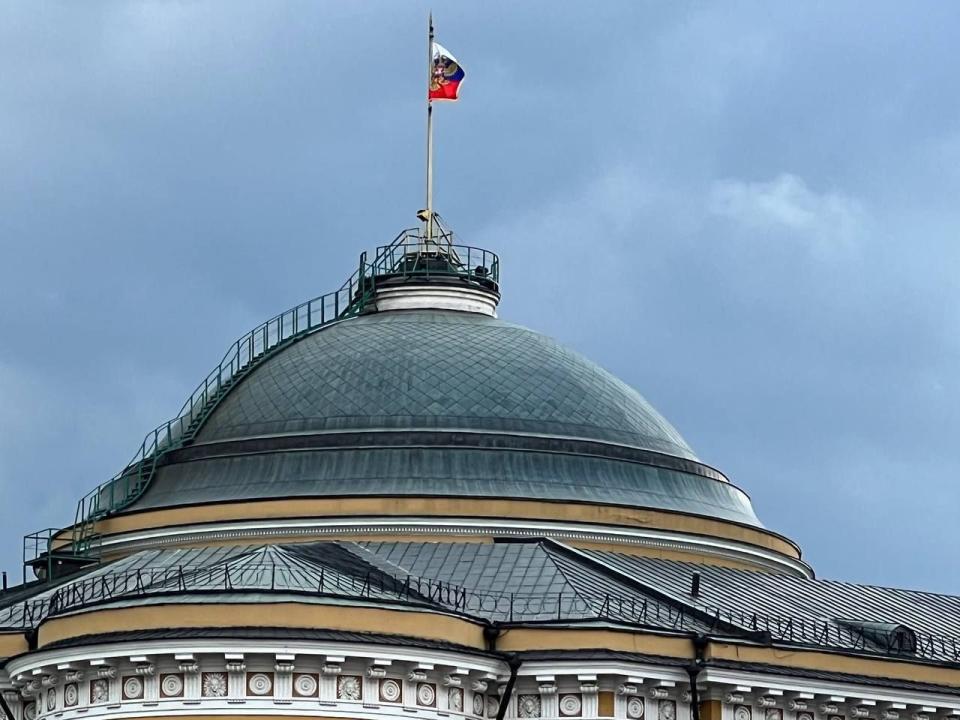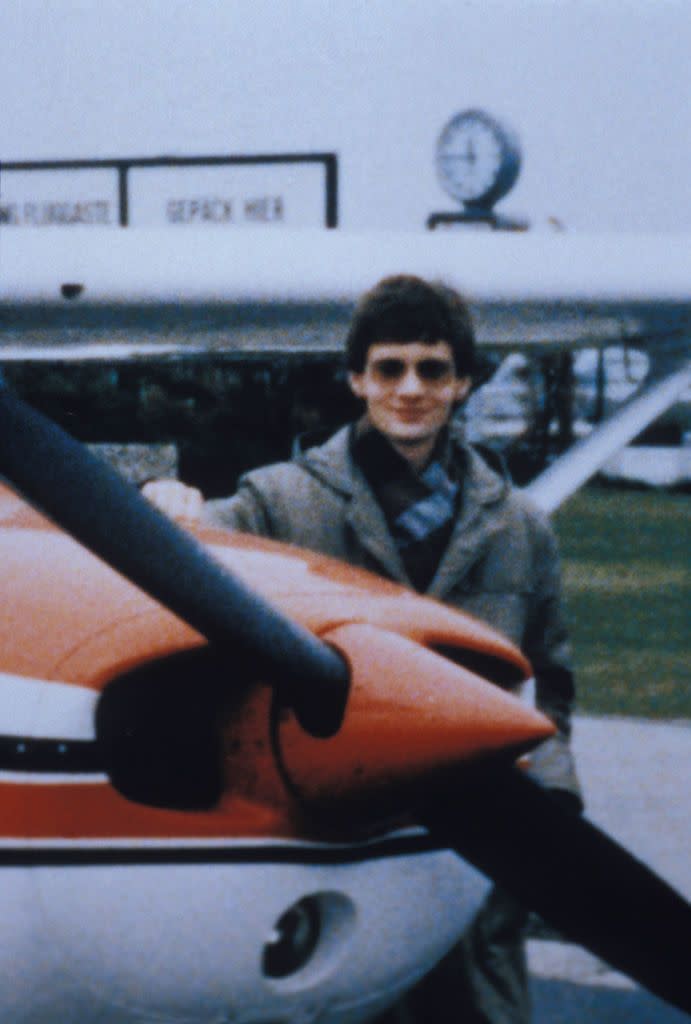Russia Says Ukraine Tried to Kill Putin in a Kremlin Drone Attack. It Didn't Work.

- Oops!Something went wrong.Please try again later.
On May 3, two armed drones plummeted toward the Kremlin. At least one exploded directly above the dome of the Kremlin Senate, causing shrapnel to rain down on the home of Russian President Vladimir Putin.
Russian reports state that both drones were shot down by air defenses, but this can’t be visually confirmed from available footage.
One video of the attack shows a fixed-wing drone gliding past the dome of the Senate Palace building toward a target beyond before exploding in a cloud of flaming debris. Two individuals can be seen climbing up the stairs near the dome at the moment of the attack.
Videos of an apparent drone strike on the Kremlin overnight. Russia’s state news agencies are confirming the strike. Unclear what drone was used. From the damage, this seems mostly symbolic, at least for now. https://t.co/1Y5nWEjPsm pic.twitter.com/CRkTbWImSv
— Samuel Bendett (@sambendett) May 3, 2023
Formerly the home of the Tsar’s Governing Senate, the triangular Senate Palace now houses Russia’s presidential administration.

No one was reported injured, and Putin was apparently not even present at the time of the attack, residing instead at Novo-Ogoryovo.
Videos and photo of the alleged UAV attack on the Kremlin, reportedly sent in by a bystander to a Russian Telegram news channel: pic.twitter.com/zCu7AzR6Sl
— Faine Greenwood (@faineg) May 3, 2023
A separate drone attack on a Russian oil storage facility in Krasnodar does appear to have caused some damage.
To the point - there was also an apparent overnight drone strike on an oil storage facility in Russia's Krasnodar region. One drone was intercepted and one appeared to hit the target. https://t.co/wCCHWtIzA7 pic.twitter.com/AGWJ3hi4Eh
— Samuel Bendett (@sambendett) May 3, 2023
But even an ineffectual attack on Moscow’s “fortress within a city” is a shock, and raises questions about the Russian military’s ability to protect Moscow’s airspace—especially less than a week before the May 9 Victory Day military parade, which for now will proceed as scheduled. However, there’s now a blanket ban on operating any drones in the Moscow area.
Ukraine’s government has denied responsibility for the attack, with official suggesting that the attack may either have been the result of actions by local Russian resistance forces, or a false-flag designed to create support for further escalation of Russia’s war in Ukraine. U.S. secretary of state Antony Blinken also advised taking Kremlin’s accusations “with a grain of salt.”
However, this attack follows a pattern of numerous preceding strikes on targets within Russian borders, which have been denied by Kyiv since Putin launched his massive new invasion of Ukraine in February 2022.
Moscow may mount an intensified retaliatory strike, likely favoring Kyiv and perhaps targeting government buildings—or even individual officials. There are presently calls on Russian social media baying for an even more vicious response than Russia’s already continual strategic bombing of Ukrainian cities.
How did they pull it off?
Russian bombers and rocket launchers have poured a staggering array of glide bombs, rockets, hypersonic glide vehicles, Iranian kamikaze drones, and cruise and ballistic missiles into cities across Ukraine since Russia’s massive invasion in 2022.
But even from the conflict’s early days, there have been retaliatory pin pricks—a helicopter raid on a fuel depot across the border, a strike on a Russian strategic bomber base using modified Soviet target-practice drones, and so on.
Overtime, drone attacks in particular have pushed deeper and deeper into Russian airspace, creeping closer and closer to Moscow. While (most) drones may be a lot slower than the jet bombers and fighters Russian air defense missiles are designed to shoot down, they tend to have a low-radar signature due to small size and construction from non-reflective composite materials. When that’s combined with flying low and slow to mask themselves using intervening terrain, it significantly complicates radar detection—a problem Russia’s military first encountered over Syria.

In fact, the Kremlin’s vulnerability to the low-and-slow approach was demonstrated way back in 1987, when an idealistic, peace-minded German named Mathias Rust somehow penetrated its airspace in a Cessna 172 light aircraft and landed near Red Square.
The Kremlin drone attack likely could have come about in two ways. One would have been to have agents smuggle in shorter-range drones into Russia to execute an attack. The other would have been for a larger, long-range drone in Ukraine to slip through Russian air defenses.
Bear in mind the fact that ground-based radio command-links for drones cannot usually exceed 110-miles range by much. However, a drone may be programmed to autonomously carry out an attack—particularly if the drone is aided by satellite navigation for precision, remains linked using a satellite-communications, is relayed to fall under a control of a forward-deployed operator closer to the target.
Samuel Bendett, an expert on Russian developments in drone and AI at the Center for Naval Analyses and CNAS security think tank, told Popular Mechanics that the attack’s launch point was unclear.
“Ukraine has PD-1, PD-2 and UJ-22 drones that look similar to the one in the video, as well as Chinese-made Mugin-5 that was apparently used in earlier attacks. It could have been any one of these drones.”

“There were earlier drone attacks where UAVs landed in the Moscow region, apparently by avoiding air defenses due to flying low about ground… Ukrainian have been attacking Russian territory proper before and this attack carries massive symbolism since May 9 parade is supposed to still take place on Red Square,” Bendett noted further.
What are the implications?
Ukraine can’t generate anywhere near the volume of long-range strikes Russia can—and the drone-based means it does have at its disposal don’t hit as hard as large bombs or cruise missiles.
Thus, for its strategic attacks to have material consequences, they must either damage or destroy especially high value targets (like ships, valuable aircraft, and so on) or strike especially volatile targets like fuel or ammunition depots (where even a modest amount of explosives can go a very long way).
It’s unlikely that those who planned the Kremlin drone attack genuinely believed it would kill Putin, or otherwise seriously impair the Kremlin’s operations through direct damage. But they undoubtedly hoped that the political shock of the strike would be a benefit to them.
The attack will undoubtedly compel the Kremlin to beef up short-range, low-altitude air defenses in order to better protect against drone attacks likely to slip through the otherwise extensive long-range, high-altitude air defense umbrella around Moscow.

That will likely focus on electronic warfare systems that can jam radio-control and satellite-navigation signals, as well as short-range air defense vehicles like the gun and missile-armed Pantsir-S, and possibly additional short-range radars or other types of sensors. Russia is already known to extensively employ satellite-navigation spoofing technology wherever Putin goes for his protection.
Of course, reinforced Moscow defenses impose additional costs, and divert resources from those deployed to secure battlefield and rear-area positions near the frontline in Ukraine. However, the overall severity and direction of the political consequences of the Kremlin drone attack cannot yet be deduced.
You Might Also Like

